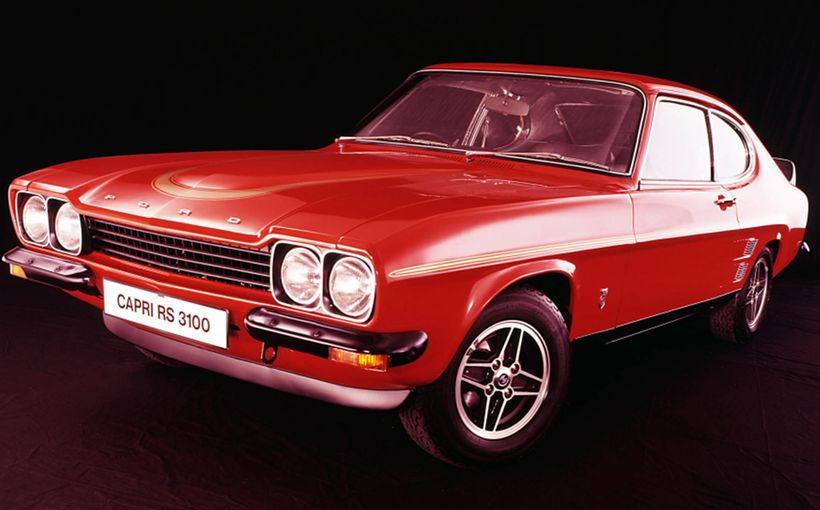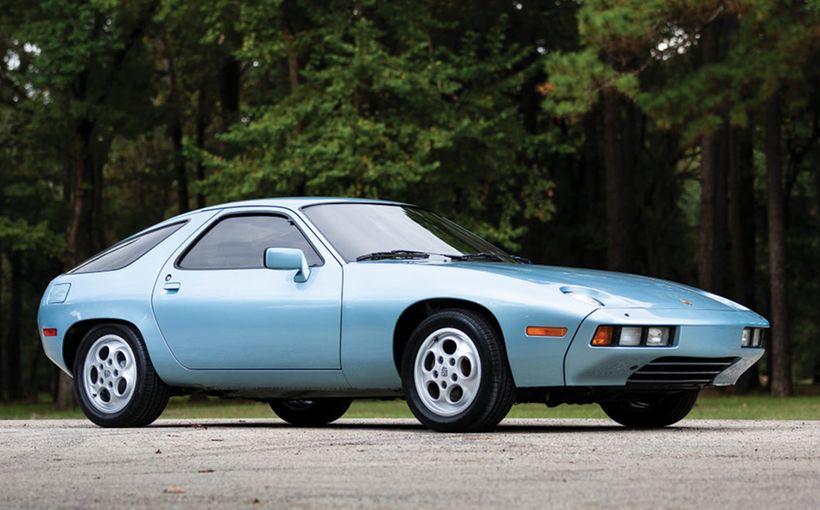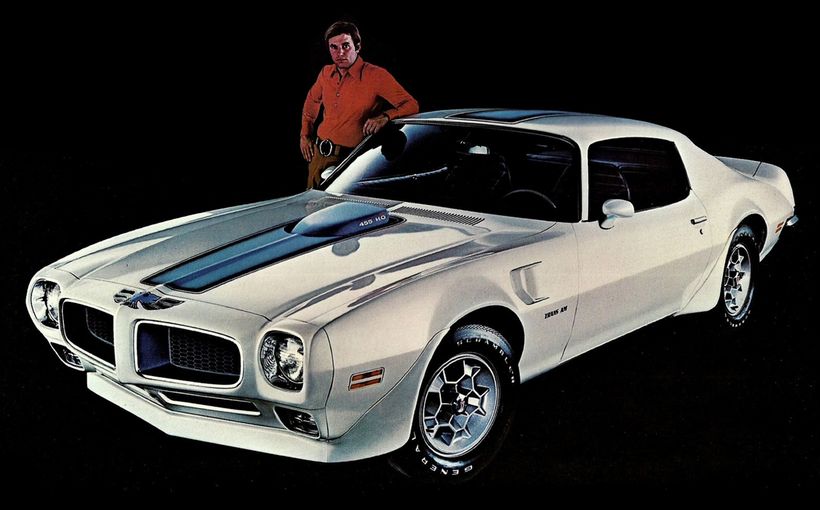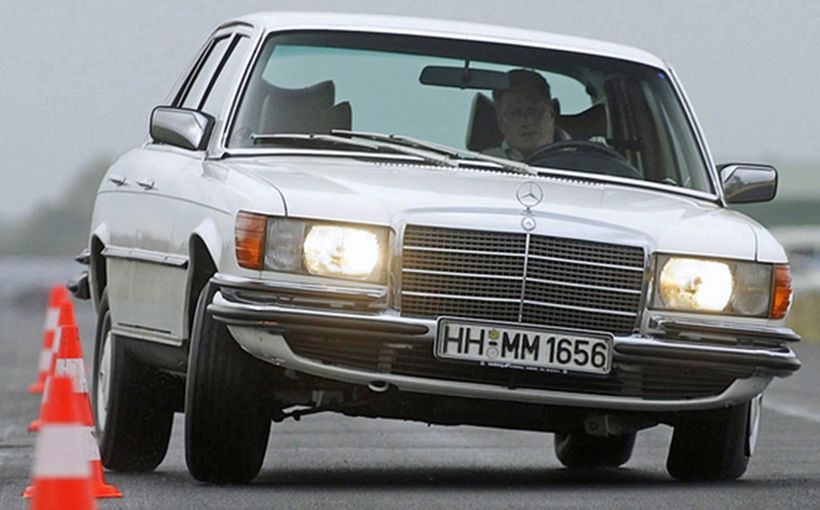Fiat 124: Bathurst, Racing Journos and the Ultimate ‘Road Test’

Scuderia Veloce’s top-placed Fiat 124 in the 1967 Gallaher 500 was driven by motoring journos Bill Tuckey and Max Stahl. This is Tuckey showing his distinctive straight-arm driving style as he guides the 124 through Forrest’s Elbow on its way to an outright top 20 finish.
“Earlier in the year, Grenville Motors (NSW Fiat distributor) had decided a fun way to launch the new 124 sedan would be to stage a race for motoring journalists at Warwick Farm Raceway,” Max Stahl told Shannons Club. “Bill Tuckey won, I came second and John Smailes came third, so they added Mike Kable to make up a team and let us loose at Bathurst in 1967.”
Those were the days. Stahl retains fond memories of that special weekend on the Mountain, when a quartet of prominent motoring journalists in new Fiat 124 sedans was faced the formidable task of trying to topple BMC’s brilliant Mini Cooper S.
In reality the 124s had no chance of beating the Minis, but Grenville Motors saw a class win purely as icing on the cake. Its primary goal was to showcase the sporting credentials and rugged durability of the new Italian cars in Australia’s biggest touring car race. Hence the clever strategy of recruiting motoring scribes to drive them at Bathurst, to achieve maximum exposure and positive publicity in some of the nation’s most widely-read publications.

The second Scuderia Veloce entry was shared by motoring scribes Mike Kable and John Smailes. The Fiat 124 sedans performed faultlessly in their Bathurst debut, winning praise from all who drove them.
Grenville Motors backed two Fiat 124 ‘works’ cars entered by David McKay, who in addition to his role as motoring editor of The Telegraph newspaper also headed up a high profile race team under the exotic Scuderia Veloce banner, which in Italian loosely translated to ‘Stable of Speed’.
One of the Fiats was shared by Wheels editor Tuckey and former top 48-215 Holden racer Stahl, then editor of Racing Car News. In the second car was The Australian’s motoring editor Mike Kable and freelance scribe John Smailes, who had filled in for the absent McKay at Warwick Farm and would later establish one of the motoring industry’s most prolific PR agencies.
Between the four of them, the Fiat 124 would get to prove its performance and reliability in the toughest annual ‘road test’ of them all - and get lots of free ink in the press as a result.
“Grenville Motors certainly got plenty of column inches out of that exercise,” Stahl chuckled. “The Fiat 124 got lots of positive write-ups which got people talking about the cars and no doubt buying them. As the official (state) distributor, Grenville Motors wanted exposure above all else and they certainly got it. I mean, how could you miss with a team run by a motoring journalist and four journos as drivers!”

The Tuckey/Stahl Fiat 124 displays the clean and simple lines of the Italian sedan which have stood the test of time remarkably well, compared to many other cars of the 1960s.
Mission Impossible on the Mountain
From 1963 to 1972, when the annual Bathurst 500 was held exclusively for stock standard road cars, the class structure (apart from 1972) was based purely on showroom prices regardless of engine capacity. This often created huge performance disparities, highlighted in 1967 when Fiat’s new 124 sedan faced the Mini Cooper S.
Fiat’s new-for-1967 124 sedan was small and light, featuring crisp four-door styling and sparkling performance. Based on a compact 2420mm wheelbase, it combined twin-wishbone front suspension and a well-located coil-sprung live rear axle.
With a kerb weight of just 950kg, the lusty 1.2 litre four’s 65bhp could propel the Italian sedan to a genuine 100mph (160 km/h). The 124’s other major strength was its superb four-wheel disc brakes at a time when such desirable hardware was usually found only on exotic sports cars. With widely praised handling dynamics on Pirelli radial tyres, the superbly balanced Italian sedan was considered a dark horse for class victory if all the cards fell its way.

One of the two privately-entered Fiat 124s in the 1967 Gallaher 500 was shared by speedy veterans Bill Daly and George Murray, which split the two Scuderia Veloce entries at the finish. The distinctive chequered nose treatment was to make the car easily identified by its pit crew to avoid confusion. This was common practice at Bathurst, back in the days of (sigh) 60-car grids!
The Mini Cooper S’s pivotal advantage over the 124 sedan was in its power relative to kerb weight. Although they had similar engine outputs and top speeds, the Fiat had to lug an extra 300kg (or the equivalent of four passengers) resulting in a power-to-weight ratio of 15.8kg/kW compared to the Mini’s far superior 11.6kg/kW.
The Fiat’s 39-litre fuel tank was also 11 litres short of the 50 litres stored in the Cooper S’s twin tanks, which combined with its smaller engine and frontal area (less drag on Conrod) could run longer between top-ups. The Mini’s much lighter weight was also easier on tyres, combined with handling and braking that was as close as you could get to a go-kart with doors.

The other privately-entered 124 at Bathurst in 1967 was the Trevor Meehan/Gary Cooke example, which set the fastest qualifying time of the four entered. This car featured a patriotically Italian paint scheme with distinctive red/white/green racing stripes (see final story image).
1967 Gallaher 500
The 1967 race featured five classes based on retail prices comprising Class A (up to $1800), Class B ($1801-2100), Class C ($2101-3000) Class D ($3001-4500) and Class E (Over $4500).
Class C ($2101-$3000) in which the Fiat 124s were entered appeared to be tailor-made for the Cooper S. For the 1967 race the British pocket rocket was looking good for three class wins in a row, particularly given its strength in numbers with a total of 10 entered including several works entries.
In addition to the two distributor-backed Fiats, two more 124s were private entries for Trevor Meehan/Gary Cooke and veterans Bill Daly/George Murray. Making up the rest of the Class C line-up was an eclectic mix of price-based competitors including a Holden HD X2, Fiat 850 Sport Coupe, a pair of Prince Skylines and a humble XR Falcon 500 V8 automatic (which was in fact a covert test of Ford’s proposed Highway Patrol car to prove its auto trans was up to the job).

Judging by relative qualifying and race performances, the 998cc Mini Coopers which competed in Class B ($1801-2100) were a closer match for the Fiat 124s than the demonstrably superior 1275cc Cooper S in Class C. Here the Tuckey/Stahl 124 leads the Class B-winning Don Holland/Peter Cray Mini Cooper, which finished behind two of the four Fiat sedans in outright placings.
In those days, the Bathurst 500 was strictly a weekend affair with practice and qualifying on Saturday and the race on Sunday. It didn’t take long for the performance canyon between the flying S-type Mini Coopers and their Class C rivals to become apparent. The fastest of the BMC works cars, shared by Irish rally star Paddy Hopkirk and local Mini ace Brian Foley, claimed the class pole.
The fastest of the 124s, driven by Trevor Meehan/Gary Cooke, qualified 13th and 30th overall. Although its official qualifying time (along with many others in 1967) has been lost over time, the next car ahead of it on the grid clocked 3 min 27.9 seconds. In other words, the fastest Fiat 124 was at least 18 seconds slower than the fastest Mini Cooper S!

The Daly/Murray Fiat 124 powers through Murray’s Corner at Bathurst in 1967. This angle emphasises the handsome and beautifully simple lines of the 124 sedan, which with its four-door practicality made it as popular with families as it was with performance enthusiasts.
Although that disparity wouldn’t be as great in the race, qualifying did confirm that the Fiats would be fighting amongst themselves. The Tuckey/Stahl and Kable/Smailes 124s qualified right behind Meehan/Cooke, with the Daly/Murray 124 several places further back on the grid.
At the end of an enthralling race that lasted almost seven hours, the Bob Holden/Tony Fall Cooper S had won Class C by a full lap on its way to fifth outright. Another six Minis filled second to seventh places in class.
Next up was the first of the Fiats, the Tuckey/Stahl 124 finishing eighth in class (20th outright) ahead of Daly/Murray in 10th, Kable/Smailes in 11th and the fastest qualifiers Meehan/Cooke coming home 12th.

This wonderful photo shows why Bathurst was so revered by car buyers in the 1960s. If a stock standard road car like the Meehan/Cooke Fiat 124 could survive seven hours of this torture at Mount Panorama without a hiccup, then it was certainly tough enough for daily road duties. A good showing at Bathurst in those days ensured strong showroom traffic.
Taking into account the specialised hand-built preparation of the BMC works cars and the depth of top-shelf local and international driving talent, the 1967 Bathurst result was not as clear-cut a demonstration of relative performance as it may have appeared.
And Grenville Motors had plenty to smile about. In addition to its four-man publicity machine, the new Italian cars performed faultlessly in their first and only Bathurst 500 appearance, with all four crossing the finish line in good shape after nearly seven hours and 800km of flat-out driving.

With headlights ablaze, the mercurial Holden/Fall Cooper S is about to put another lap on the Tuckey/Stahl Fiat 124 as they hammer through Reid Park at Bathurst in 1967. The Class C-winning Mini finished 10 laps in front of the highest-placed 124, but the Italian cars achieved a superior 100 per cent finishing rate.
In his praise of the 124’s Bathurst debut, Tuckey claimed that not one of the Fiat bonnets had needed to be raised during the race, with crews only adding petrol and changing the right-hand front tyres. By comparison, three of the 10 Cooper S Minis retired due to mechanical failure or accident damage.
“They were just perfect those 124s, typical continental machines of the time,” Stahl reflected. “They weren’t absolute rockets but gee, they weren’t slow by any stretch and were very pleasant to drive. And the four-wheel disc brakes were superb. David McKay was always big on brakes, especially four-wheel discs, so he was a fan of the 124s as well. They were just great little cars.”

There’s those pesky Class B Minis again! The Daly/Murray 124 goes door-to-door with the Bill Stanley/Digby Cooke 998cc Mini Cooper through Murray’s Corner. The British car finished 8th in Class B and many laps behind the Fiats in outright terms.
As always, there was healthy competition between the racing journos. Although Stahl couldn’t recall who was the fastest driver of the four, the friendly rivalry he enjoyed with his great mate Tuckey was useful when sharing the same car as it ensured they were both using up all it had to offer. He also rated Tuckey’s combined driving and communication skills very highly.
“Bill was a good driver, very good indeed,” Stahl said. “He could drive a variety of cars and always get the best out of them. He reminded me of an early version of Jeremy Clarkson. Both great verbal communicators and their writing style is much the same too, informative and educational with great humour. If Bill had been around today in his prime, I reckon he could easily have replaced Clarkson on Top Gear and done a brilliant job of it.”

The Meehan/Cooke and Daly/Murray 124s emerge from The Cutting as they continue the steep climb along Reid Park to the top of the Mountain. Note the flimsy-looking timber ‘safety’ fencing which in those days was the only thing that stood between the cars and a long tumble down a steep hill.
On reflection, Fiat was represented by some wonderful models in Class C at Bathurst during the 1960s including the 1500, 124 and 125 but due to the race’s price-based classes the marque always found itself facing the same insurmountable British rival.
Even so, its annual appearances in The Great Race went a long way in proving the speed, handling and durability of the Italian marque to a growing and passionate local fan base. Particularly in 1967, when four motoring journos gave the brilliant 124 sedan its ultimate ‘road test’ on Australia’s ultimate public road.









